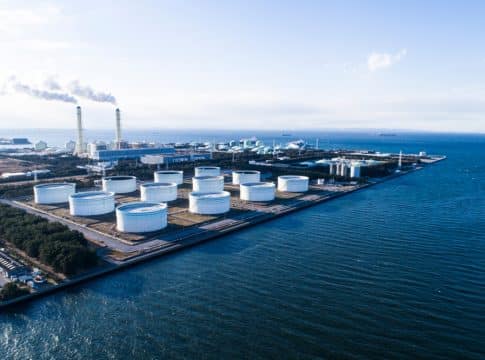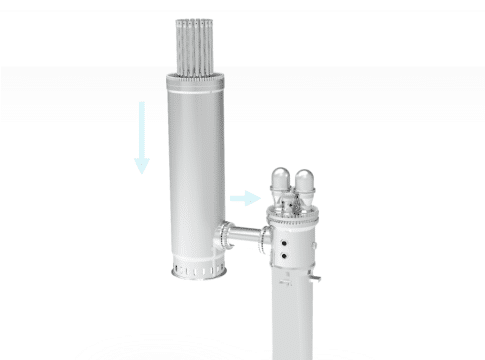Are U.S. Utilities Falling Short of Biden’s 2035 Clean Energy Goals?
The latest report from the Sierra Club paints a sobering picture of the U.S. utility sector’s transition to clean energy. The Biden administration set an ambitious goal for the U.S. power sector to fully decarbonize by 2035. However, the report finds that the 50 utility parent companies with the most significant fossil fuel investments are only on track to reach 52% clean energy by that deadline.
The Sierra Club analysis suggests that the gap between current plans and the federal decarbonization goal could delay efforts to mitigate climate change impacts.
Decarbonization Dreams or Delays?
The Biden administration set a clear target in early 2021, aiming for the U.S. power sector to achieve net-zero emissions by 2035. Achieving this target is crucial for limiting global warming and avoiding the most severe consequences of climate change.
However, the Sierra Club’s report reveals that utilities currently relying heavily on coal and natural gas are not on track to meet these goals. Instead, many of these companies plan to add significant new natural gas capacity, totaling 93 gigawatts (GW) by 2035.
This expansion is reflected in data from S&P Global Commodity Insights, which indicates an increase in planned natural gas projects in the U.S. As of September 2024, 148 new natural gas-fired power plants were either announced or under development, up from 133 projects recorded in late April.
This growing investment in natural gas raises concerns about the power sector’s ability to transition away from fossil fuels. It can also impact if the sector can meet its 2035 clean energy target.
RELATED: U.S. Natural Gas Prices to Jump 44%: What’s Driving the Surge?
Utility Report Card: Who’s Leading, Who’s Failing?
The Sierra Club’s report evaluates a wide range of utilities, including investor-owned utilities, public power providers, cooperatives, and large municipal utilities. The analysis focuses on three key metrics:
plans for phasing out coal by 2030,
halting the construction of new natural gas plants by 2035, and
scaling up clean energy resources by 2035.
Utilities were graded on their progress, with several prominent companies receiving failing marks. Among those receiving an “F” rating were Southern Co., PPL Corp., and Duke Energy Corp.
Visual from Sierra Club report
According to the Sierra Club, these companies have made inadequate progress toward their decarbonization goals and continue to invest in fossil fuel infrastructure. Xcel Minnesota, on the other hand, gets an “A” for its clean energy transition plan.
While some utilities acknowledged the findings of the report, they emphasized the complexities of transitioning to a cleaner energy mix.
For example, Duke Energy spokesperson Madison McDonald acknowledged the challenges ahead, noting that the company aims to reduce carbon emissions by at least 50% by 2030, compared to 2005 levels, and reach net-zero emissions by 2050. McDonald highlighted the importance of balancing short-term fluctuations in emissions as the company retires coal plants and brings new energy sources online.
When State Policy Clashes with Climate Ambitions
The Sierra Club’s analysis also highlights instances where utilities have rolled back previously announced climate targets. FirstEnergy Corp., for example, announced in late 2023 that it would not meet its goal of reducing greenhouse gas emissions by 30% by 2030. The company cited state policies as a significant factor, explaining that it had to extend the operations of its two coal-fired plants in West Virginia to align with local energy policy priorities.
FirstEnergy’s spokesperson, Tricia Ingraham, pointed to West Virginia’s support for maintaining coal generation, emphasizing that reducing coal-fired output for environmental reasons would be inconsistent with state energy policy. This scenario underscores the tension between federal climate goals and state-level policies, which can complicate the path to decarbonization.
Clean Energy Momentum and Barriers
Despite the challenges highlighted in the report, there are some positive trends in the U.S. power sector’s transition to clean energy. According to the U.S. Energy Information Administration (EIA), over 40% of U.S. electricity currently comes from carbon-free resources. These include renewables like wind and solar, as well as nuclear energy.
This is also echoed by Sarah Durdaller, a spokesperson for the Edison Electric Institute. Durdaller emphasized that achieving the 2035 target will require collaboration between environmental groups, industry leaders, and government entities to overcome obstacles such as building transmission infrastructure.
Another study by the Pacific Northwest National Laboratory (PNNL) suggests that completing 12 high-voltage electric transmission projects in the US West could significantly cut carbon emissions, reducing power-sector emissions by 73% from 2005 levels by 2030.
The study emphasizes the importance of renewable energy and improved transmission infrastructure in achieving national climate targets, including President Biden’s goal of a 100% carbon-free power system by 2035. These projects are seen as vital for connecting renewable energy sources to the grid and accelerating the transition to a cleaner energy future.
Improving grid resilience and expanding transmission capacity are seen as essential steps in making the power sector more sustainable.
Rural Energy Revolution: Will Co-Ops Catch Up?
The report also turned its focus to electric cooperatives, which supply power to many rural communities across the United States. These cooperatives, many of which are still heavily reliant on fossil fuels, generally received low grades in the analysis.
Still, the increase in renewable energy adoption among cooperatives is a sign that even these smaller players are beginning to embrace cleaner energy solutions.
The Sierra Club’s report highlights a significant disconnect between the U.S. utility sector’s current trajectory and the federal government’s 2035 decarbonization goals. While some progress has been made in adding renewable energy capacity, the planned expansion of natural gas generation poses a major hurdle to achieving a fully decarbonized power sector.
The study underscores the need for more ambitious actions and policies to steer utilities away from fossil fuel dependency and toward a cleaner, more sustainable America.
READ MORE: Powering the West: How Transmission Projects Can Slash Power-Sector Emissions by 73%
The post Are U.S. Utilities Falling Short of Biden’s 2035 Clean Energy Goals? appeared first on Carbon Credits.



